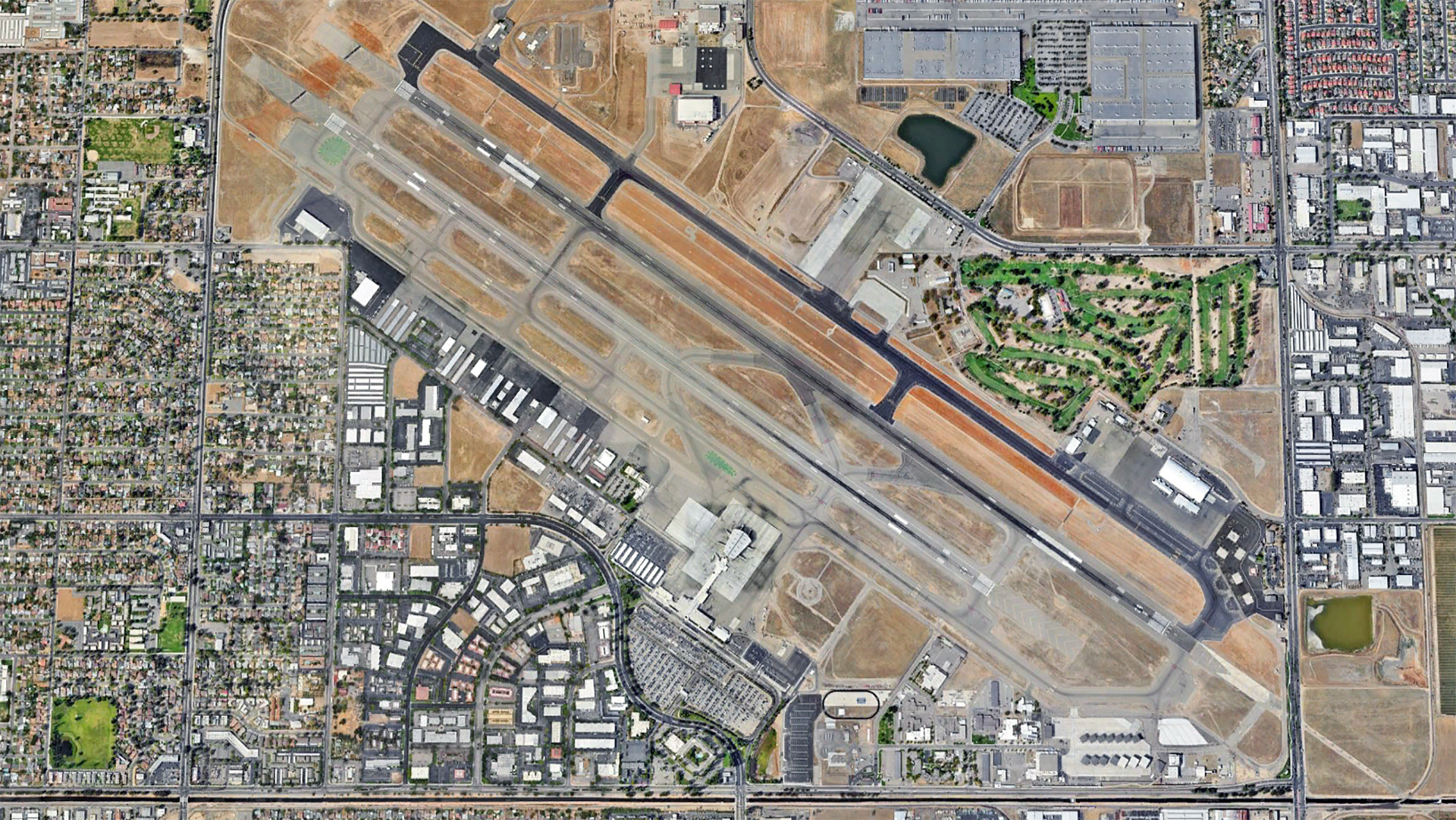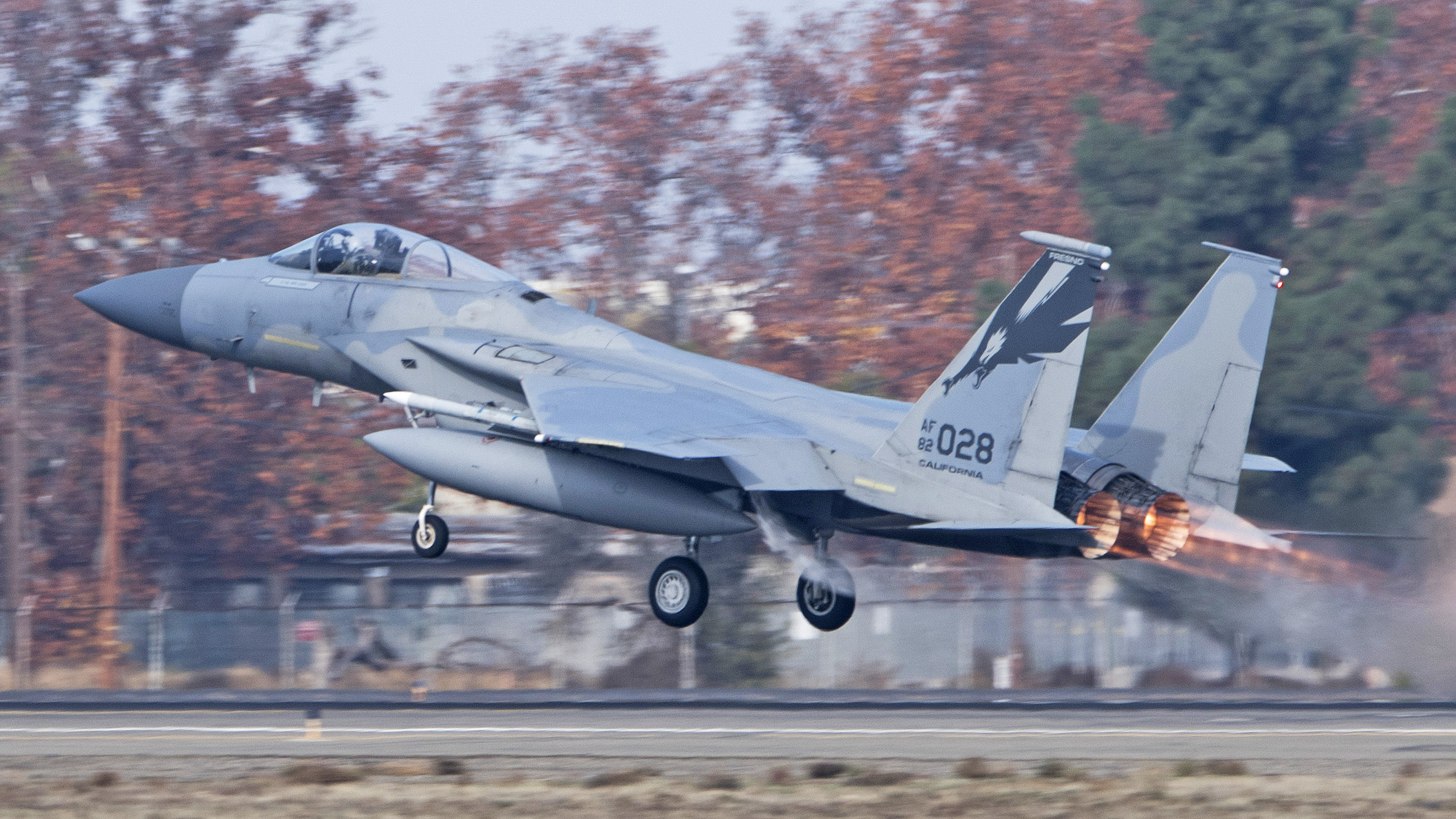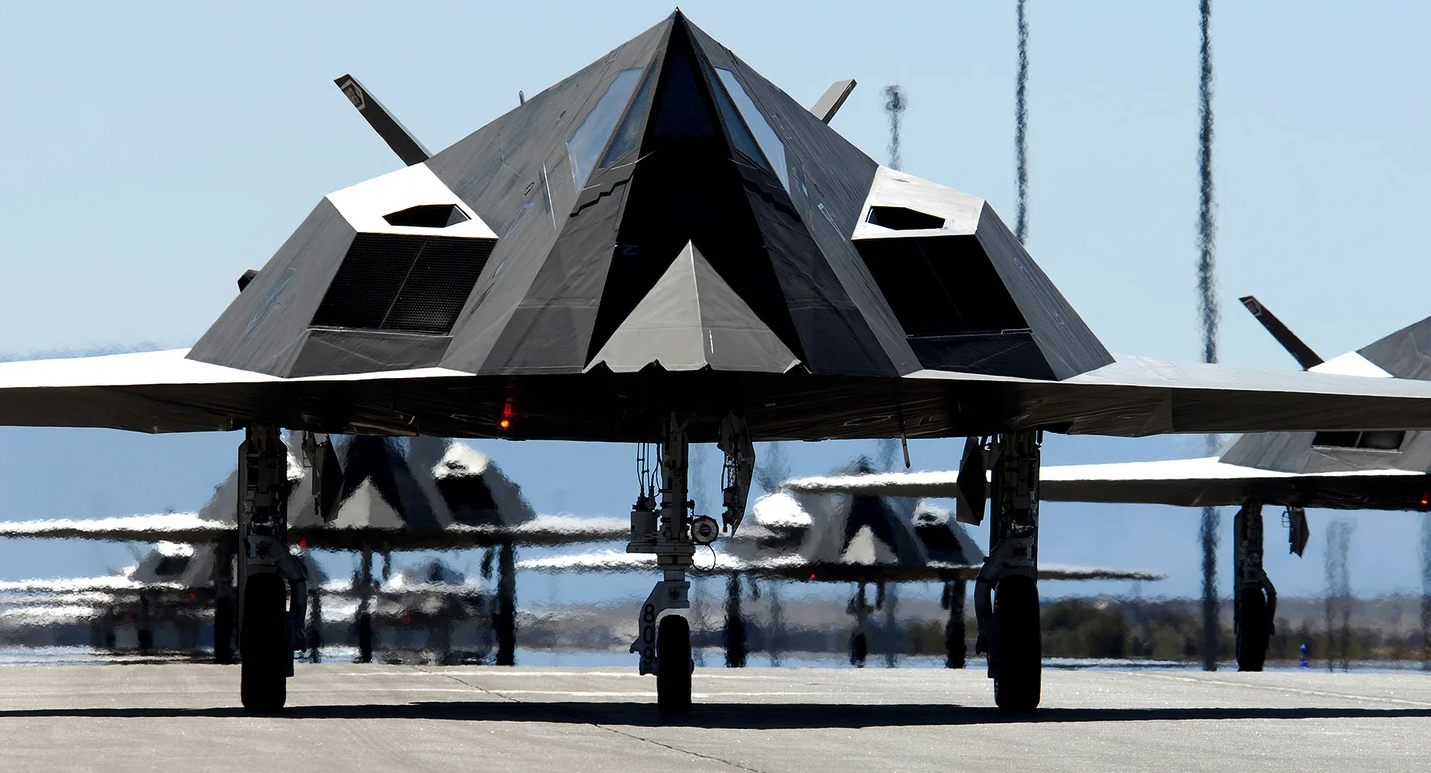Fresno-Yosemite International Airport had a very strange pair of visitors this afternoon. Two F-117s landed at the airport in north-central California and taxied over to the 144th Fighter Wing’s base, which is located just to the south of the passenger terminal. You can just imagine people’s surprise when they saw the long-retired (officially) flat-black faceted Nighthawks touch down and taxi to the base with their white drag-chutes billowing behind them. It’s worth noting that at least one of the jets was not fitted with radar reflectors.
We reached out to the 144th Fighter Wing’s public affairs department for comment as to what the stealth jets were doing on their ramp. They informed us that their arrival was fully planned and that they would be training with the Wing’s F-15C/D Eagles over the coming days. This is a major development, as even though we have known the F-117s have been providing ‘red air’ aggressor capabilities for a long time now, that mission has never been fully acknowledged by the USAF. Fresno’s F-15s are nearly entirely focused on the air-to-air combat mission set.

@aviatography got some great snaps of the F-117s arrival in Fresno (one of which is featured as the banner shot of this post). If you can’t see the embed below, make sure to check them all out on Instagram here.
As we have stated for years, the F-117’s utility as dissimilar low-observable (stealthy) targets has become a premium offering as stealth technology proliferates among America’s potential adversaries—namely China and Russia. But beyond that, cruise missiles, which fly low and have small radar and infrared signatures, remain a major concern for units that are tasked with the homeland air defense mission, especially those that protect America’s maritime borders.
New active electronically scanned array (AESA) radars have been installed on many USAF fighter aircraft tasked with this mission, including the 144th Fighter Wing’s F-15C/Ds, so that they could better spot and engage small radar cross-section targets like cruise missiles. Their Sniper targeting pods—traditionally an air-to-ground sensor system—also give them the ability to visually identify these targets at long range, day or night, so that they can be engaged before it is too late. The Sniper pod can be slaved to a radar track and vice-versa, helping to quickly identify and track potentially hostile targets.

This is where the F-117, officially retired 13 years ago and just celebrated its 40th ‘birthday,’ really shines as a dissimilar aggressor. Most pilots have never flown against anything like it before and its reduced infrared and radar signature will give them very advanced training on what it is like to intercept such a hard to detect and unfamiliar target.
This is the first in likely many more F-117 ‘road tours’ we will see in the future as the type, and the “Black Knights” who fly and maintain them, step out of the shadows. So far they have been to Marine Corps Air Station Miramar in California on a short deployment and the type was seen operating out of Nellis Air Force Base in Nevada once again, the latter of which not far from the Nighthawks’ clandestine home at Tonopah Test Range Airport. There was also some chatter that they may have gone to Eglin or Tyndall Air Force Bases in Florida for a recent exercise, as well, although that deployment remains unconfirmed. Now that they can refuel from any USAF KC-135, they can expand their reach with ease.

It’s worth noting that the F-117s also support developmental and test initiatives and are part of what seems to be a larger, secretive airborne radar cross-section testing task force that has other exotic assets at its fingertips.
Regardless, this is a big step in the F-117’s now-notorious second shot at life and yet another indicator that they will become a more common sight at various installations around the U.S. in the future.
Contact the author: Tyler@thedrive.com
